Professor Carol's Articles for
A Publication of Memoria Press
Moonbeams and Music
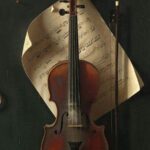 This charming line from the song “Maria” in The Sound of Music reminds us that music cannot be held in the palm of one’s hand or measured by physical parameters. Like a moonbeam, music’s substance is intangible. Music springs to life from sound waves emanating from instruments and voices. These waves are received by the ear and pressed into our brains. Continue
This charming line from the song “Maria” in The Sound of Music reminds us that music cannot be held in the palm of one’s hand or measured by physical parameters. Like a moonbeam, music’s substance is intangible. Music springs to life from sound waves emanating from instruments and voices. These waves are received by the ear and pressed into our brains. Continue
A Child’s Journey into Sacred Music
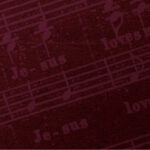
Was this your first sacred song? If so, you had a perfect start for the journey into sacred music.
Sacred music evokes or expresses the Christian faith, either through specific words describing God’s qualities and scriptural events, or by the creation of a musical atmosphere designed to foster reverence. Continue
Better Than Background
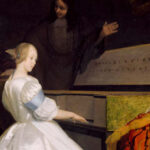 Few people recognize engagement in the arts as an intrinsic element of spiritual virtue. To use the words of Pope John Paul II from his “Letter to Artists,” penned in 1999,
Few people recognize engagement in the arts as an intrinsic element of spiritual virtue. To use the words of Pope John Paul II from his “Letter to Artists,” penned in 1999,
[T]rue art has a close affinity with the world of faith, so that, even in situations where culture and the Church are far apart, art remains a kind of bridge to religious experience. Continue
Haydn’s Creation
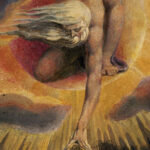 Pizzicato? Yes, what better way could Haydn have chosen to “ignite the divine light bulb” in his oratorio The Creation than to send a quiver of sound into the air through the pluck of a string?
Pizzicato? Yes, what better way could Haydn have chosen to “ignite the divine light bulb” in his oratorio The Creation than to send a quiver of sound into the air through the pluck of a string?
The dominant composer of Viennese Classicism, Franz Joseph Haydn (1732-1809), knew well how to narrate a story in sound. Continue
Narratives Through Music: Peter and the Wolf
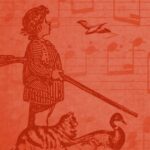 Stories travel from a writer’s mind to the heart and imagination of a reader. In the Western tradition, the written or spoken word serves as the primary vehicle for conveying stories. Yet the visual and performing arts excel at telling stories too, and a combination of the two often makes a story more expressive and memorable than one told using words alone. Continue
Stories travel from a writer’s mind to the heart and imagination of a reader. In the Western tradition, the written or spoken word serves as the primary vehicle for conveying stories. Yet the visual and performing arts excel at telling stories too, and a combination of the two often makes a story more expressive and memorable than one told using words alone. Continue
Better Than Background
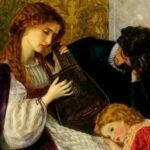 I was recently asked this question at a conference: “What classical music do you recommend I play in the background for my kids?”
I was recently asked this question at a conference: “What classical music do you recommend I play in the background for my kids?”
Answering it is a bit of a delicate dance because I first need to say that any fruitful approach to classical music needs to place it in the foreground. Any serious art needs to engage the senses. Continue
The Power of Russia’s Fairy Tales
 What is more wondrous than a fairy tale? Or more dangerous? What can we learn from how a nation regards its legacy of fairy tales?
What is more wondrous than a fairy tale? Or more dangerous? What can we learn from how a nation regards its legacy of fairy tales?
Far from being fanciful stories to entertain a child, fairy tales offer sophisticated narratives cloaked in layers of symbolism and filled with nuanced or direct reflections of a culture’s fears, values, and desires. Continue
Nature and the Birth of the New
-150x150.jpg) Few aspects of life inspire artists more than nature. Whether in painting, poetry, music, theater, or dance, creative artists across the centuries have depicted and reflected upon the physical phenomena of our world. Both the grandest subjects (mountains, planets) and those most intimate and fragile (gossamer dragonfly wings) are defining elements in the arts throughout our Western heritage. Continue
Few aspects of life inspire artists more than nature. Whether in painting, poetry, music, theater, or dance, creative artists across the centuries have depicted and reflected upon the physical phenomena of our world. Both the grandest subjects (mountains, planets) and those most intimate and fragile (gossamer dragonfly wings) are defining elements in the arts throughout our Western heritage. Continue
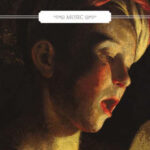 Do you recall these lines from the song “Do-Re-Mi”? In the course of this beloved song from The Sound of Music, the von Trapp children are taught to sing. Of course, actual children could not spring from musical ineptitude to artistic mastery in one afternoon, even if Julie Andrews was their coach. But the principles and process espoused in this scene apply to teaching all music within the Western tradition. Continue
Do you recall these lines from the song “Do-Re-Mi”? In the course of this beloved song from The Sound of Music, the von Trapp children are taught to sing. Of course, actual children could not spring from musical ineptitude to artistic mastery in one afternoon, even if Julie Andrews was their coach. But the principles and process espoused in this scene apply to teaching all music within the Western tradition. Continue Frederick the Great, Catherine the Great, & the Arts
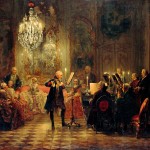 The appellation “the Great” tends to be awarded to prominent figures who exhibit an extraordinary degree of military prowess or achieve outstanding success in political or intellectual endeavors. Indeed, two legendary eighteenth-century monarchs, Frederick II of Prussia and Catherine II of Russia, earned this appellation precisely for such reasons. Continue
The appellation “the Great” tends to be awarded to prominent figures who exhibit an extraordinary degree of military prowess or achieve outstanding success in political or intellectual endeavors. Indeed, two legendary eighteenth-century monarchs, Frederick II of Prussia and Catherine II of Russia, earned this appellation precisely for such reasons. Continue
Formal Structure in Music
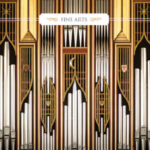 When discussing the fine arts, we explore structure through the concept of “form.” Sometimes it’s best to envision form as a physical design. Other times, we perceive an artistic form as a multi-part narrative shaping a creative work. And while someone might forge a completely new form, generally an artist works with forms that have endured for centuries. Continue
When discussing the fine arts, we explore structure through the concept of “form.” Sometimes it’s best to envision form as a physical design. Other times, we perceive an artistic form as a multi-part narrative shaping a creative work. And while someone might forge a completely new form, generally an artist works with forms that have endured for centuries. Continue
Going to the Library
 Memories of graduate school flood my mind these days. Those four years of coursework at the University of North Carolina marked the beginning of my life as a scholar. I had painfully figured out how to study as an undergraduate, but the fervid quest to learn, the burning desire to piece together difficult or obscure information, the yearning to cultivate knowledge and use it as a basis of one’s understanding . . . Continue
Memories of graduate school flood my mind these days. Those four years of coursework at the University of North Carolina marked the beginning of my life as a scholar. I had painfully figured out how to study as an undergraduate, but the fervid quest to learn, the burning desire to piece together difficult or obscure information, the yearning to cultivate knowledge and use it as a basis of one’s understanding . . . Continue
So What If Beethoven Was Deaf?
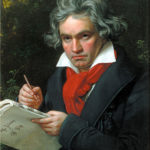 People often tell me they are teaching classical music through “Composer Studies,” choosing one composer at a time, listening to his music, and reading about his life. But are biographies necessary or even a good tool for teaching the arts? Let me offer an example to explain why I am likely to say “no.” Continue
People often tell me they are teaching classical music through “Composer Studies,” choosing one composer at a time, listening to his music, and reading about his life. But are biographies necessary or even a good tool for teaching the arts? Let me offer an example to explain why I am likely to say “no.” Continue
Three Blind Mice
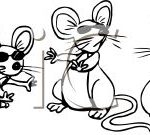 Our own kids (adopted at ages six and nearly fourteen) came to us chock full of traditional songs, poems, and outdoor games learned during their years in rural Russia. So we were able immediately to launch them into the broader musical culture: opera, symphony, Broadway musicals, and American classic songs. Consequently, plowing through today’s recordings of little-kid music has been unnerving. Continue
Our own kids (adopted at ages six and nearly fourteen) came to us chock full of traditional songs, poems, and outdoor games learned during their years in rural Russia. So we were able immediately to launch them into the broader musical culture: opera, symphony, Broadway musicals, and American classic songs. Consequently, plowing through today’s recordings of little-kid music has been unnerving. Continue
A Night at the Museum
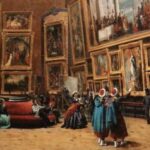
At the toddler stage, teaching art to kids is easy: Throw on a smock and get out the finger paints. They need no inspiration. They have a visceral connection to their self-expression in color. But as children grow, their relationship to art changes. Art is no longer simply a reflection of their own self-expressions. But we make a mistake if we teach them that its now all about someone else’s expression. Continue
Beauty Is Not Boring
 We all do it, don’t we? We carefully defend the bold choice we’ve made to educate our children seriously and rigorously. Friends or relatives may assert that we are choosing outdated traditions, irrelevant in our techno-saturated world. Latin in elementary school? Whatever for? The Great Books? Aren’t they terribly boring? Handwriting and memory work? We have computers for that kind of thing. Continue
We all do it, don’t we? We carefully defend the bold choice we’ve made to educate our children seriously and rigorously. Friends or relatives may assert that we are choosing outdated traditions, irrelevant in our techno-saturated world. Latin in elementary school? Whatever for? The Great Books? Aren’t they terribly boring? Handwriting and memory work? We have computers for that kind of thing. Continue
Planting the Seed for a Life-Long Engagement with Art
 We live in an era highly focused on the visual. Our lives are shaped by digital images blasted from cell phones, tablets, and massive billboards that obliterate the night sky with their intense light. Yet, despite this visual stimulus, we travel farther each day from meaningful encounters with the important human expression called “art.” Continue
We live in an era highly focused on the visual. Our lives are shaped by digital images blasted from cell phones, tablets, and massive billboards that obliterate the night sky with their intense light. Yet, despite this visual stimulus, we travel farther each day from meaningful encounters with the important human expression called “art.” Continue
Combating Cantiphobia

At church they don’t bother to pick up a hymnbook. They don’t even mumble or pretend to sing. Of the people who come to my booth at conferences to talk about music, many claim they can’t sing. Nonsense.
I’m giving it a name: cantiphobia. And I’m here to cure it. Continue
What Makes a Song Good?
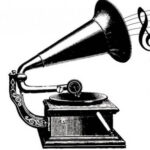 Seemingly simple, the question of what makes a song good is actually a complicated one. The answer is: We cannot give one simple, or complex, formula to determine the quality of a song. However, several guiding principles do help determine what makes a song good. These transcend individual judgment and apply across a span of time. Continue
Seemingly simple, the question of what makes a song good is actually a complicated one. The answer is: We cannot give one simple, or complex, formula to determine the quality of a song. However, several guiding principles do help determine what makes a song good. These transcend individual judgment and apply across a span of time. Continue
Studying Music the Classical Way
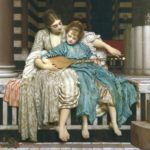 Classical educators know that the quadrivium includes music as one of four core subjects along with arithmetic, geometry, and astronomy. This list can strike our modern minds as puzzling. If we are to approach music as a classical subject, we need to rethink our terminology and what it really means to study music. Continue
Classical educators know that the quadrivium includes music as one of four core subjects along with arithmetic, geometry, and astronomy. This list can strike our modern minds as puzzling. If we are to approach music as a classical subject, we need to rethink our terminology and what it really means to study music. Continue
